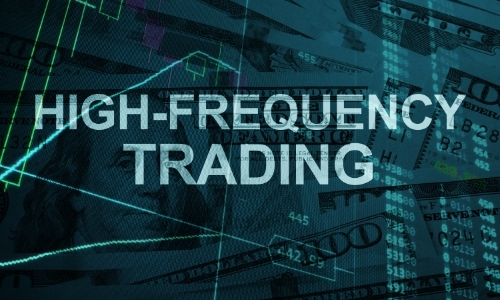High-frequency trading (HFT) is a trading strategy that relies on advanced technology and algorithms to execute a large number of trades at extremely fast speeds. HFT firms use powerful computers and high-speed data connections to exploit small price discrepancies and take advantage of fleeting market opportunities. Here are some key aspects of high-frequency trading:
Speed is the defining characteristic of high-frequency trading. HFT firms employ sophisticated algorithms to analyze market data and execute trades within milliseconds or even microseconds. By being able to react swiftly to market events, HFT traders aim to capitalize on small price discrepancies that may only exist for a fraction of a second. The speed advantage allows them to gain profits through rapid-fire trading and by capturing small price movements.
The use of technology and automation is fundamental to high-frequency trading. HFT firms invest heavily in advanced trading infrastructure, including low-latency trading systems and high-speed data connections. These technologies enable them to receive and process market data faster than traditional traders, facilitating rapid decision-making and trade execution. Additionally, HFT algorithms are designed to automatically analyze vast amounts of data, identify patterns, and execute trades accordingly, without human intervention.
Liquidity provision is another significant aspect of high-frequency trading. HFT firms play a vital role in providing liquidity to the market by continuously placing bids and offers. They are willing to buy or sell securities at narrow bid-ask spreads, contributing to market efficiency and reducing transaction costs for other market participants. However, it is important to note that HFT’s liquidity provision can quickly vanish during periods of high volatility or market stress, as HFT algorithms may temporarily halt trading to mitigate risks.
Critics of high-frequency trading argue that it can lead to market instability and increase systemic risk. The lightning-fast speed at which HFT firms operate can amplify market fluctuations and contribute to sudden price swings. The potential for unintended consequences, such as flash crashes, has raised concerns about the stability of financial markets. Regulators have implemented measures to monitor and regulate HFT activities, aiming to ensure fair and orderly markets.
High-frequency trading has had a profound impact on market structure and the trading landscape. It has significantly reduced trading costs, increased market efficiency, and improved price discovery. However, it has also raised questions about market fairness, as HFT firms with superior technology and access to fast data have an advantage over other participants. The debate around the impact of high-frequency trading continues, with ongoing discussions about appropriate regulations and safeguards to maintain market integrity.
In conclusion, high-frequency trading is a trading strategy that relies on advanced technology, algorithms, and high-speed data connections to execute trades at lightning-fast speeds. It aims to profit from small price discrepancies and liquidity provision. HFT has transformed market structure, reduced trading costs, and increased market efficiency. However, concerns about market instability and fairness have prompted regulatory scrutiny. As technology continues to advance, the impact and future of high-frequency trading remain topics of ongoing debate and study.
